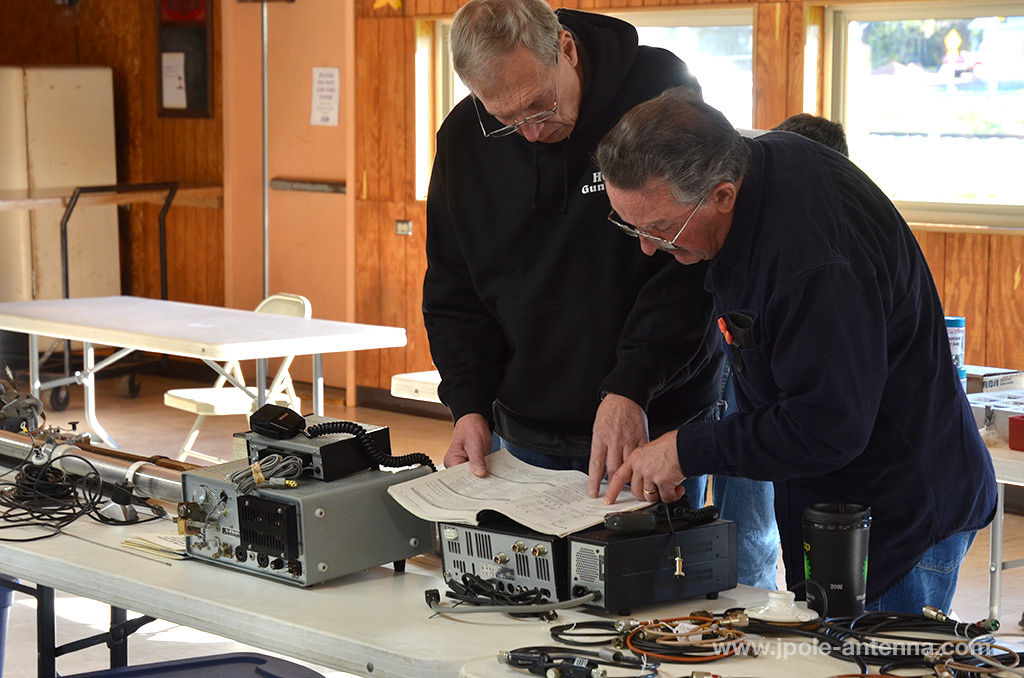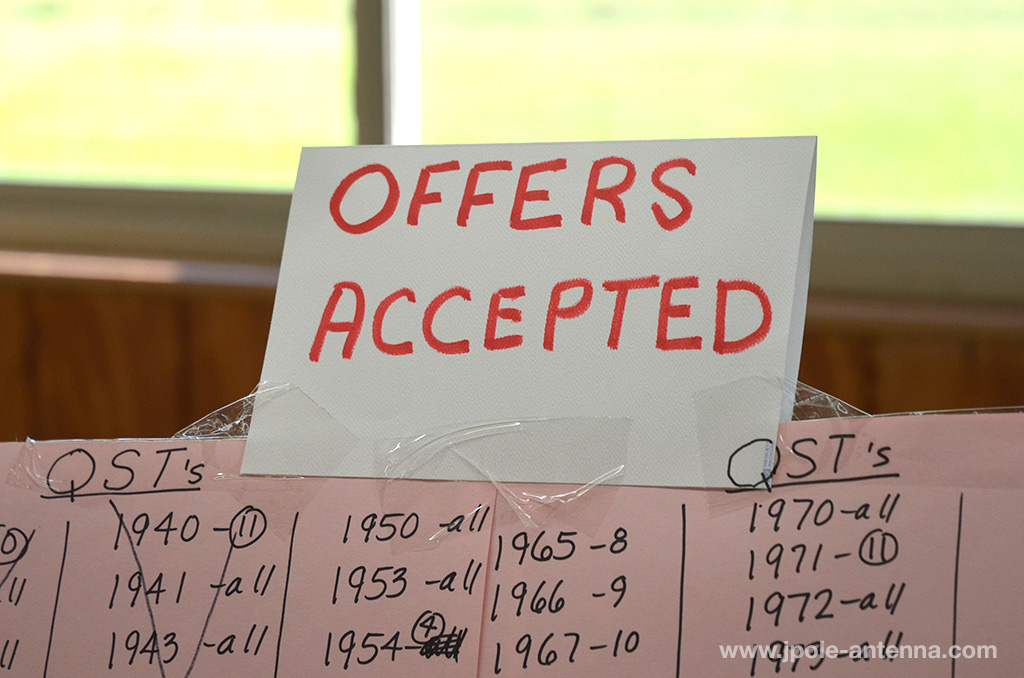Hamfests, the flea market of the amateur radio world, are part buying expedition and part social affair. Shopping a hamfest can be great way to outfit your shack, plus if you’ve been involved with ham radio more than a few years, a great way to connect and reconnect with those faces behind the microphone.
But shopping at a hamlets isn’t without peril. The same rules apply to a hamfest as at any type of flea market, but also get to add the uncertainty of buying a piece of electronic equipment. You can either accomplish a great score, or be stuck with a pig in a poke. In that vein, here’s some tips that served me well when shopping at hamfests.
Arrive early (or stay late)
Shopping at a hamfest is all about timing. Getting there early is the only way to be assured the best selection. If you are looking for something desirable, an early start may be the only way you’ll be able to find it before someone else snaps it up. Conversely, staying to the bitter end can give you the leverage to buy something at a fraction of its price, as sellers are more willing to discount instead of trucking it back home.
Real Life tip: I’ve arrived at hamfests to enter right at starting time, only to find 100 others doing the same thing. Buy your tickets in advance to bypass the line and enter the grounds right away.
Coordinate and communicate
 Hamfests are the most fun when you go with friends. Find others in your local club interested in going and carpool down. Not only will you have great conversation on the ride down and back, but you’ll also have an extra set of eyes watching for your most wanted items. Before we hit the hamfest grounds everyone in the group will share the 1 or 2 most desirable items they are looking for, then split up to search for bargains. Thanks to a fellow ham looking out for me, I was directed to an antenna tuner that was priced to sell.
Hamfests are the most fun when you go with friends. Find others in your local club interested in going and carpool down. Not only will you have great conversation on the ride down and back, but you’ll also have an extra set of eyes watching for your most wanted items. Before we hit the hamfest grounds everyone in the group will share the 1 or 2 most desirable items they are looking for, then split up to search for bargains. Thanks to a fellow ham looking out for me, I was directed to an antenna tuner that was priced to sell.
Real Life tip: If you are going in a group, set up a simplex frequency to stay in contact. Pick something obscure, maybe in the UHF band, as the popular frequencies (146.52. 146.55, 146.58 Mhz etc) will be occupied and quite busy. Hamfests can also be noisy, so a speaker mic and earpiece will come in handy.
Know what you are looking for
Don’t go into the hamfest without some type of plan. If you are looking for a transceiver, know the models and price ranges you are interested in. A bit of research ahead of time, maybe checking prices on eBay or with retailers will give you a benchmark on the value of an item. Bring a notepad and pen to jot down notes like location, model numbers, and prices. Away from the booth, use your smart phone to do a bit of research before making an offer. Knowing if an item is a currently produced model, its age, and price value gives you a bit of leverage in making the offer.
If see something unusual or unfamiliar, don’t be afraid to ask the seller about it. They may be more than willing to give you a rundown on it’s purpose or operation. Even if you are interested in buying the item, you may get a little education on something obscure.
Negotiate
 Just like a flea market, the prices at hamfests are negotiable. If you see a price that you think is too high, throw out a counter offer. But be realistic, if you are truly interested, a lowball will get you nowhere and potentially insult the seller.
Just like a flea market, the prices at hamfests are negotiable. If you see a price that you think is too high, throw out a counter offer. But be realistic, if you are truly interested, a lowball will get you nowhere and potentially insult the seller.
Not everything at a hamfest is from a private seller. Commercial retailers also inhabit these fests. Their prices will be more firm, although they will often have special deals that you may not otherwise get in the store. You can try making an offer if they are selling a bit of used equipment, but know that they will most likely not negotiate on new merchandise.
Real life tip: A big part of the negotiation process is to bring cash. Most private sellers won’t take checks or credit cards. Have cash in small bills, so you can make an offer and have the cash in hand. You won’t endear yourself to a seller by haggling him down on price and then making him change a large bill.
Buyer beware
This is the most important tip for any hamfest. Unless you are buying something from a reputable retailer, [pq]be advised that everything you see at a hamfest is as-is with no returns.[/pq] I’ve bought stuff that once I brought it home, found out it didn’t work. But you can limit your risk by looking for these danger signs.
- Dirty equipment- Is the equipment dirty or clean? A coat of dust or grime means it may have been carted to the last dozen hamfests without selling, or stored in a less than desirable fashion. Maybe the item saw a hard life and was pulled out of service because it no longer worked. Unless the price is right, I’d pass on something filthy.
- Smells- Does the radio smell like cigarette smoke or worse, burnt electronics? This could be a warning that the equipment is not functional or will soon fail.
- Unusually low price- If a deal seems too good to be true, it probably is. An unusually low price may be an indication that the item is dead or nonfunctional.
- Not willing to demonstrate- Ask to see if the item can be powered up and tested. Are you able to open the cover and see if modifications were made? A reputable seller will offer to demonstrate the equipment or give you an opportunity to inspect and test it.
Conclusion
Hamfests are a great place to pick up interesting pieces of equipment. I’ve bought radios, both new and used, and also picked up a lot of unique items you may never find anywhere else. Everything I go to a hamfest, I carry cash and give myself a budget. I’m not afraid to walk away if I don’t see something in my price range. Buyers remorse for spending too much is worse than the feeling of letting something get away. There’s always the next fest.
Do you have any hamfest shopping tips? Please feel free to leave them in the comments below.
I like that you said that most small sellers won’t take credit cards or checks. It might be a good idea to have cash on hand so you can be prepared for everything. If I was going to buy used ham radios then I would want to know about them; so, I would want to speak with a professional about them.